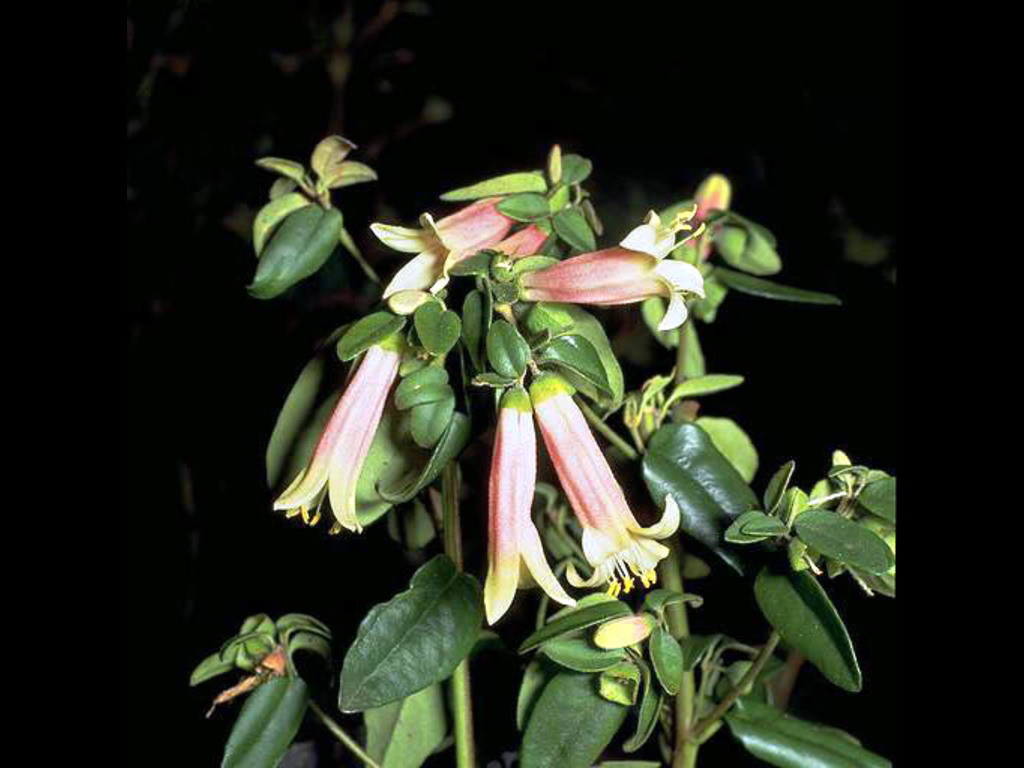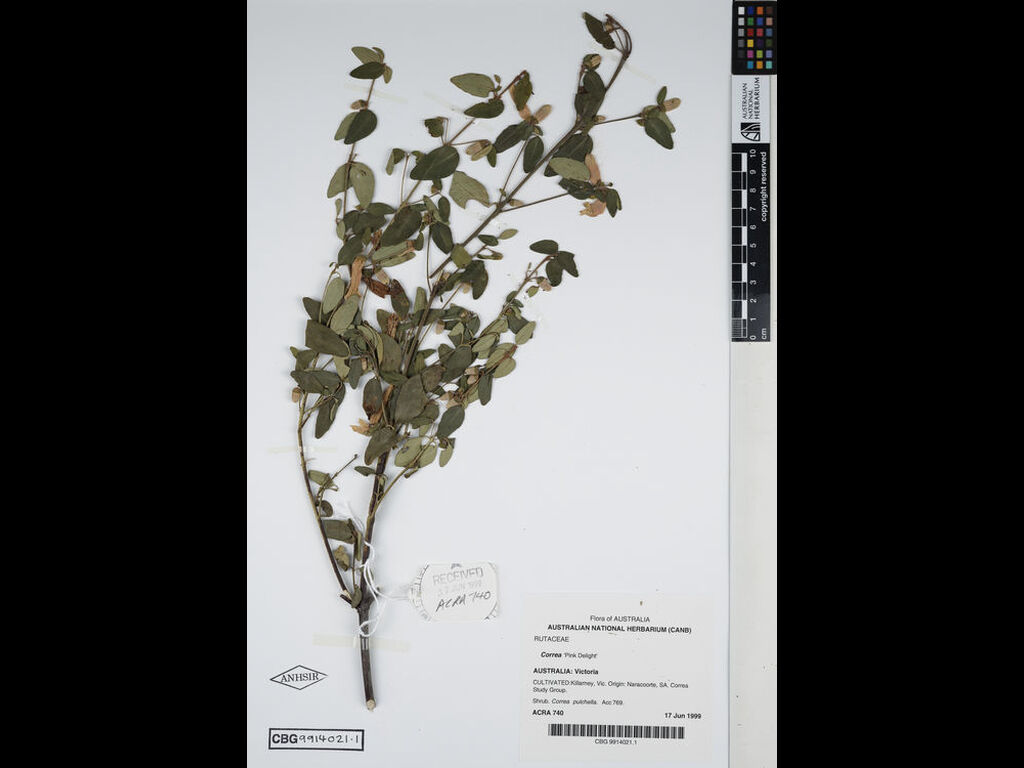Correa 'Pink Delight'
- File Number
- 769
- ACRA Field Book Number
- 740
- Registration Date
- 01/09/1999
- Application Received
- 17/06/1999
- Family
- Rutaceae
- Cultivar Name
- Correa 'Pink Delight'
- Origin
- Correa 'Pink Delight' is a garden seedling selection, possibly of Correa pulchella. The selection was made by the late Mrs Marion Beek, Naracoorte, South Australia, in 1995. The name refers to the colour of the flower and its "delightful" shape. Received: 17th June 1999.
- Characteristics
- Prostrate shrub to c. 40 cm x 2-3 m with a moderately dense habit. Branchlets and stems green, glabrous with occasional rust-coloured stellate hairs. Simple cordate leaves, 28 mm x 14 mm, with obvious pattern of oil glands, petioles 6 mm. Leaf apices obtuse, leaf bases oblique, venation reticulate, margins entire. Upper surfaces of mature leaves dark green and glabrous. Upper surfaces of young leaves glabrous with occasional rust-coloured stellate hairs. Lower surfaces pale green, glabrous with occasional white stellate hairs and scattered rust-coloured stellate hairs. Corolla cylindrical 40 mm x 15 mm, pale pink with cream tips. Peak flowering is from May to July in most districts. Diagnosis: The glabrous leaves of this cultivar conform to descriptions for C. pulchella by Wilson (1998). The flower is larger than Wilson's range for C. pulchella and the cream tips are an unusual variation. C. pulchella flowers tend to have only one colour from calyx to tip rather than two. There may be some affinity with C backhouseana in this seedling. The cultivar flower is distinctive because of its size which is larger than most C. pulchella flowers and because of its colour which is different from other C. pulchella hybrids, e.g., 'Dusky Bells', 'Pink Mist', 'Mannii'. It differs from C. 'Firebird' in flower size and colour, in size of plant and growth habit and in leaf shape and tomentum.
- Cultivation
- This cultivar is fast-growing in cultivation. It is frost and drought hardy and has a prostrate growth habit. The large and prolific pale pink and cream flowers which appear in late Autumn are an attractive feature of the plant. It is easy to grow from cuttings and is bird attracting. This form would be suited to most garden conditions. It responds favourably to light pruning. It would suit rockeries and foreground planting in garden beds.
- Publication
- Hitchcock, M. (2003), Descriptions of the Species, Varieties and Cultivars. Australian Plants 22(174): 35
- Colour Coding
- RHS Colour Chart 1995 Flowers: 55B-D, grading to 155D at tips, Leaves upper surface: 137A Leaves lower surface: 138B
- Propagation
- Cuttings from semi-firm new growth
- Applicant Name
- The applicant is Ms Cherree Densley, Killarney, Victoria, on behalf of the Correa Study Group.
- Uses
- As part of a mass planting or mixed in a shrubbery, or as a feature plant. Attracts nectar feeding birds.
- Availability
- Specialist native plant nurseries
- ANBG Accession Numbers
- ACC769, ACRA740, CBG9914021
- NSL ID
- -

